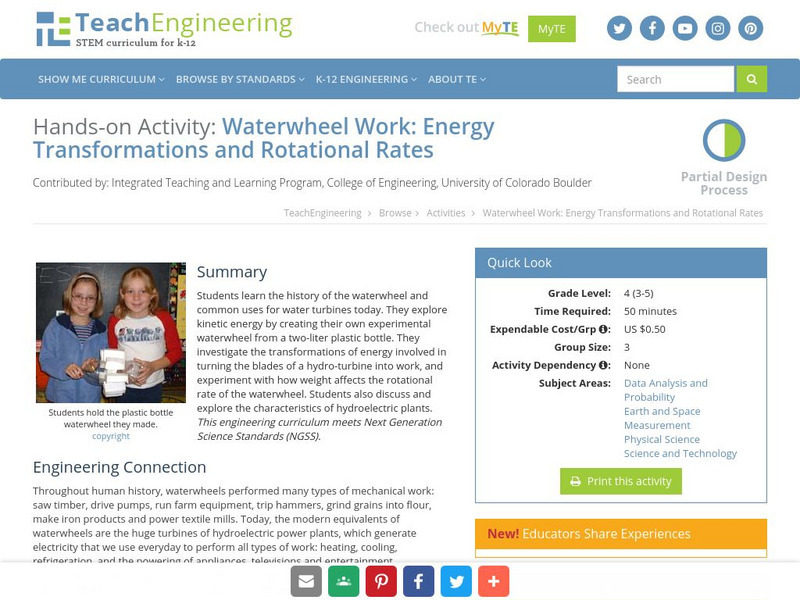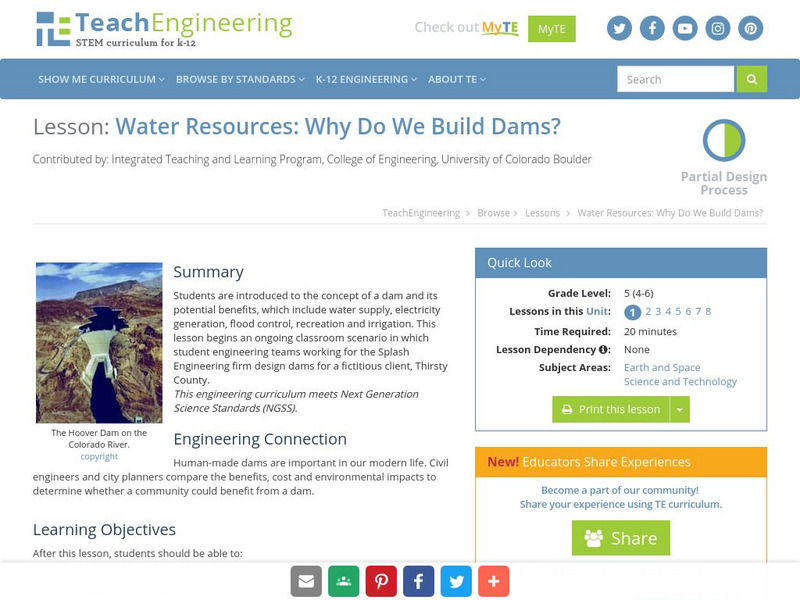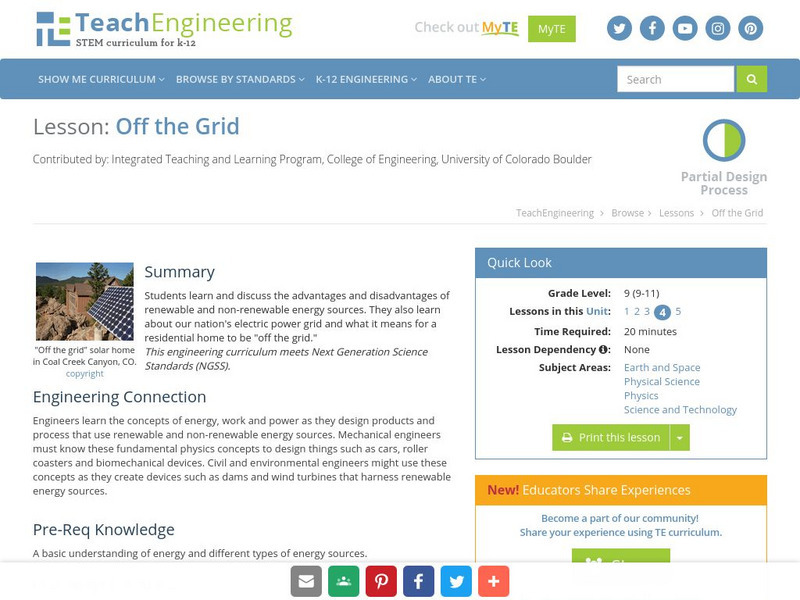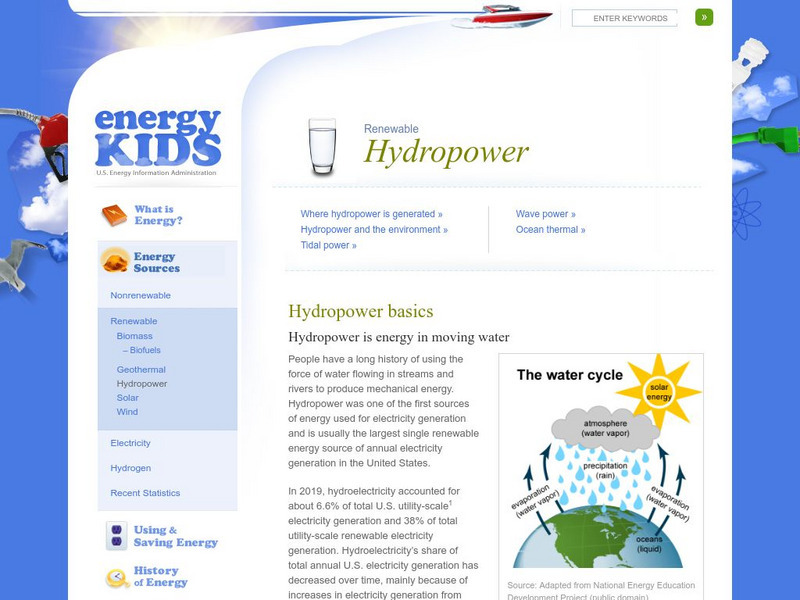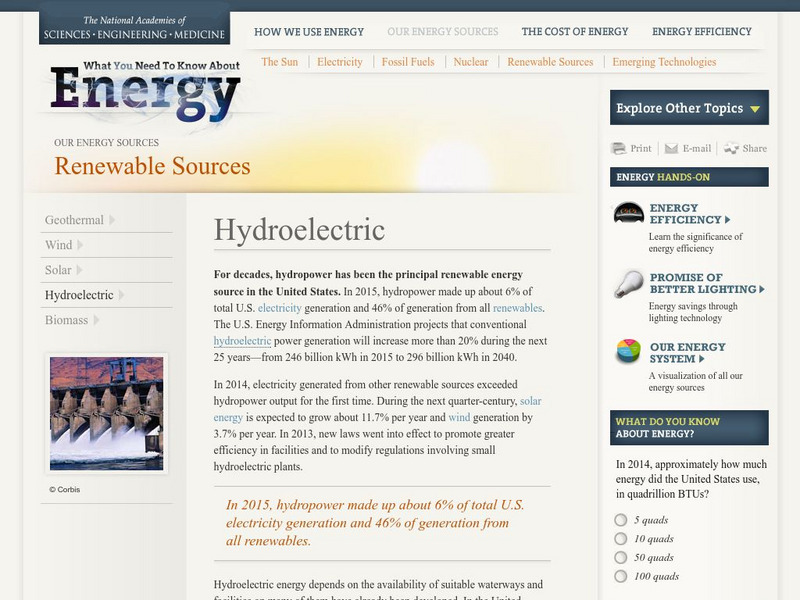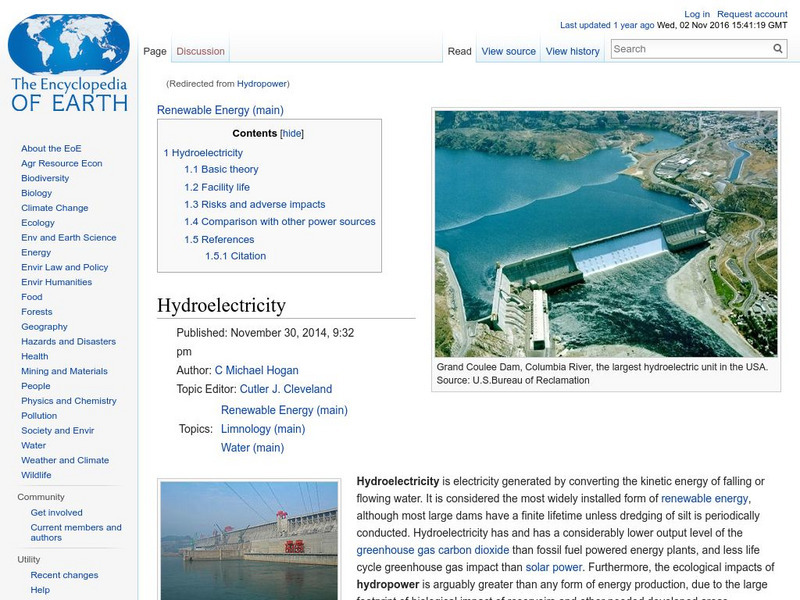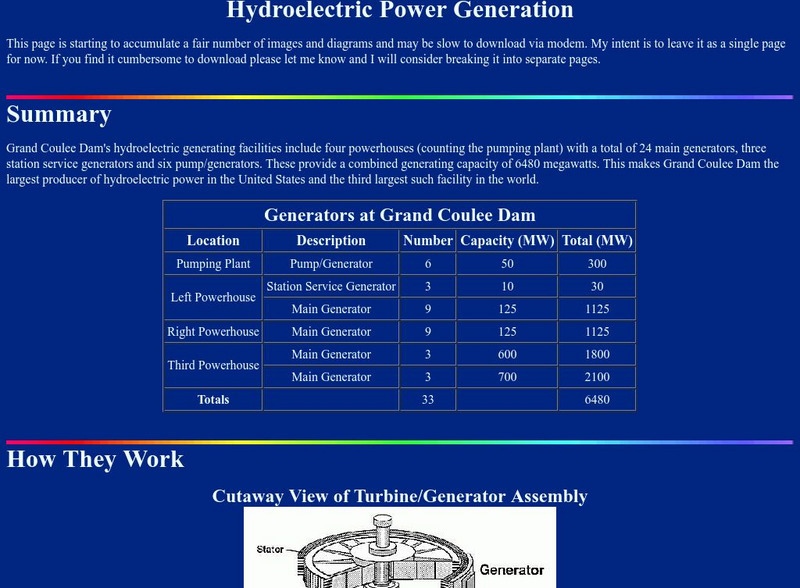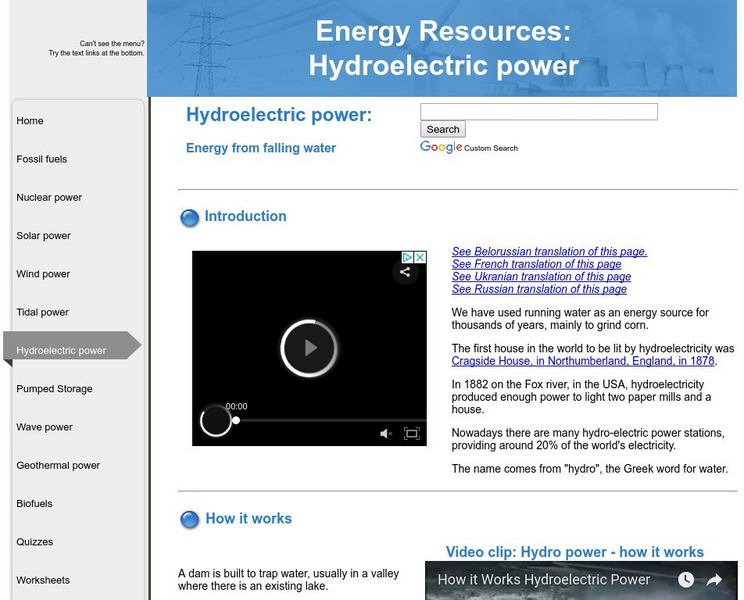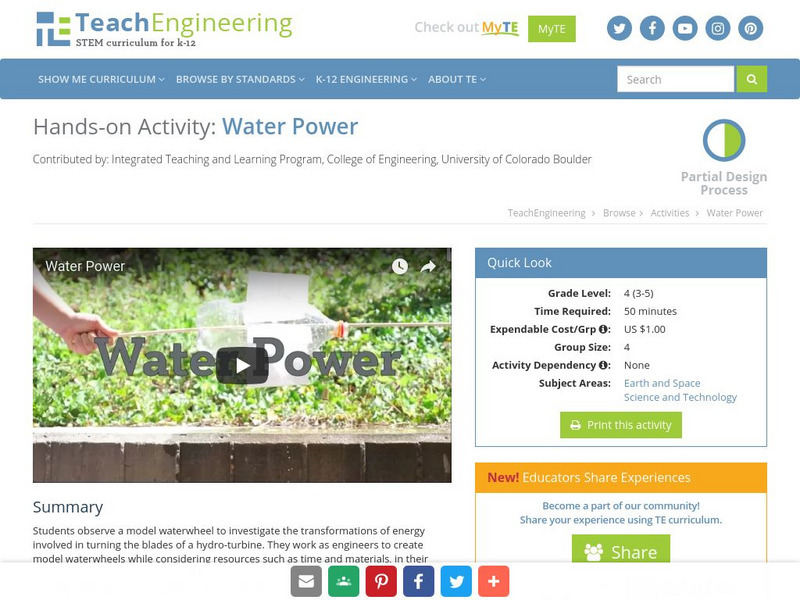Hi, what do you want to do?
Science Buddies
Science Buddies: Career Profile: Power Plant Operator
Keeping the power moving to houses and businesses is the job of the power plant operator. Whether the power comes from hyrdroelectric, nuclear, or coal energy, the power plant operator needs to know how to keep the turbines moving. This...
Science Buddies
Science Buddies: Put Your Water to Work: Using Hydropower to Lift a Load
Water creates a lot of energy, just look at the Grand Canyon. In this science fair project, you will demonstrate the power of water by converting the kinetic energy in moving water to mechanical energy, which will lift a small weight.
Geographypods
Geographypods: Theme 3: Economic Development: Energy Systems
This learning module looks at human-made systems of energy, covering different types of energy and power stations. Includes handouts, slideshows, maps, activities, photographs, an interactive animation, and videos.
Other
Texas Comptroller of Public Accounts: The Energy Report: Hydropower [Pdf]
Chapter 19 of a report on the energy industry in Texas. It looks at hydroelectric power, its history, and how it is used. Hydropower in Texas is described, its economic impact, how it is produced and its availability. The costs and...
TeachEngineering
Teach Engineering: Falling Water
Students drop water from different heights to demonstrate the conversion of water's potential energy to kinetic energy. They see how varying the height from which water is dropped affects the splash size. They follow good experiment...
TeachEngineering
Teach Engineering: Waterwheel Work
Students learn the history of the waterwheel and common uses for water turbines today. They explore kinetic energy by creating their own experimental waterwheel from a two-liter plastic bottle. They investigate the transformations of...
TeachEngineering
Teach Engineering: Power Your House With Water
Students learn how engineers design devices that use water to generate electricity by building model water turbines and measuring the resulting current produced in a motor. Students work through the engineering design process to build...
TeachEngineering
Teach Engineering: Why Do We Build Dams?
Young scholars are introduced to the concept of a dam and its potential benefits, which include water supply, electricity generation, flood control, recreation and irrigation. This instructional activity begins an ongoing classroom...
TeachEngineering
Teach Engineering: Clean Energy: Hydropower
Hydropower generation is introduced to students as a common purpose and benefit of constructing dams. Through an introduction to kinetic and potential energy, students come to understand how a dam creates electricity. They also learn the...
TeachEngineering
Teach Engineering: Off the Grid
Students learn and discuss the advantages and disadvantages of renewable and non-renewable energy sources. They also learn about our nation's electric power grid and what it means for a residential home to be "off the grid."
US Energy Information Administration
U.s. Eia Energy Kids: Hydropower: Energy From Moving Water
Of the renewable energy sources that generate electricity, hydropower is the most often used. Learn other interesting facts about hydropower as the pictorial illustrations bring the information to life.
Smithsonian Institution
National Museum of American History: Powering the Past: Emergence of Electrical Utilities in America
Looks at the history of electrical utilities in the United States from the time of Edison up to President Franklin Roosevelt.
State Energy Conservation Office-Texas
State Energy Conservation Office: Electricity From the Sun [Pdf]
Discusses forms of renewable energy that rely on the sun. For example, wind is created when solar energy heats the air, and biomass is solar energy that has been stored in plants.
National Academies of Sciences, Engineering, and Medicine
The National Academies: Renewable Sources: Hydroelectric
Hydroelectric power has been a major source of energy production in the United States. More recently, other alternative energy sources have taken some of its market share. Hydroelectricity has both advantages and disadvantages, briefly...
E-learning for Kids
E Learning for Kids: Science: Cruise Ship: What Sort of Energy Is Provided by Water?
Shana is learning about water. Help her discover all the different ways water can provide us with energy.
Encyclopedia of Earth
Encyclopedia of Earth: Renewable Energy: Hydroelectricity
Explains, in scientific terms, what hydroelectric energy is and how it is produced. Discusses the lifespan of a hydroelectric facility, the risks and adverse effects of producing hydroelectricity, and how this form compares with other...
Other
Charles Hubbard: Hydroelectric Power Generation
Describes the process of hydroelectric power generation very well. Includes drawings of turbines, pictures of actual turbines and a nice schematic of a dam/turbine system.
Other
Energy Resources: Hydro Electric Power
Alternative forms of energy site showcases Hydro-electric power. Discover how it works, it's advantages and disadvantages as well as whether or not it's considered to be a renewable resource.
Other
Seeds Foundation: Hydroelectricity
Have you ever tried to walk across a flowing stream? Have you ever watched a news report that showed cars and bridges being washed away by a flood? These experiences and events suggest the force of moving water, which provides a...
US Geological Survey
Usgs: Hydroelectric Power: How It Works
Check out this animated site of a hydroelectric generator. There is a picture of a real generator along with a description of how it works.
National High Magnetic Field Laboratory
Magnet Academy: Hydroelectric Power Station 1882
The first hydroelectric power plant, known as the Vulcan Street Plant, was powered by the Fox River in Appleton, Wisconsin.
NASA
Nasa: Climate Kids: Huge Machine Harnesses the Tides
Learn how an alternative energy source called tidal energy works, and find out where it is being harnessed.
TeachEngineering
Teach Engineering: Power, Work and the Waterwheel
Waterwheels are devices that generate power and do work. Students construct a waterwheel using two-liter bottles, dowel rods and index cards, and calculate the power created and work done by them.
TeachEngineering
Teach Engineering: Water Power
In this activity, students observe a model of a waterwheel to investigate the transformations of energy involved in turning the blades of a hydro-turbine into work. Students work as engineers to create a model for a new waterwheel while...





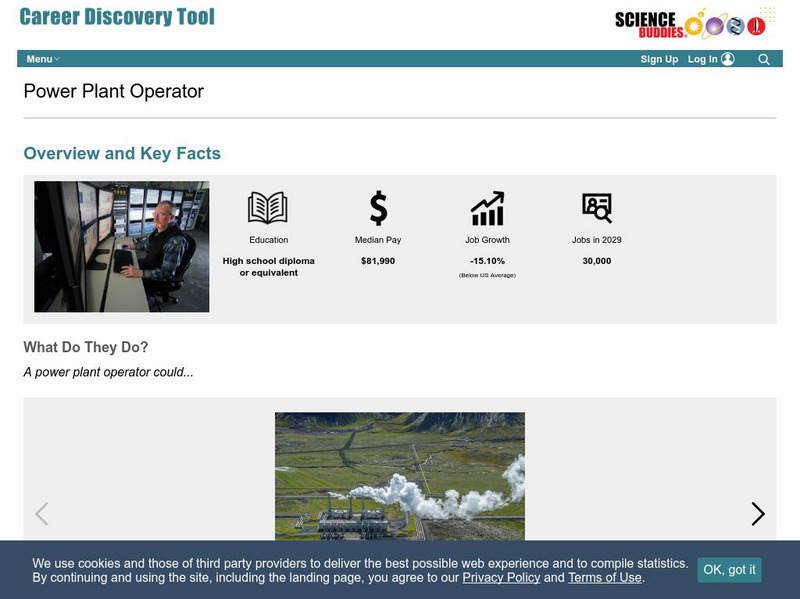

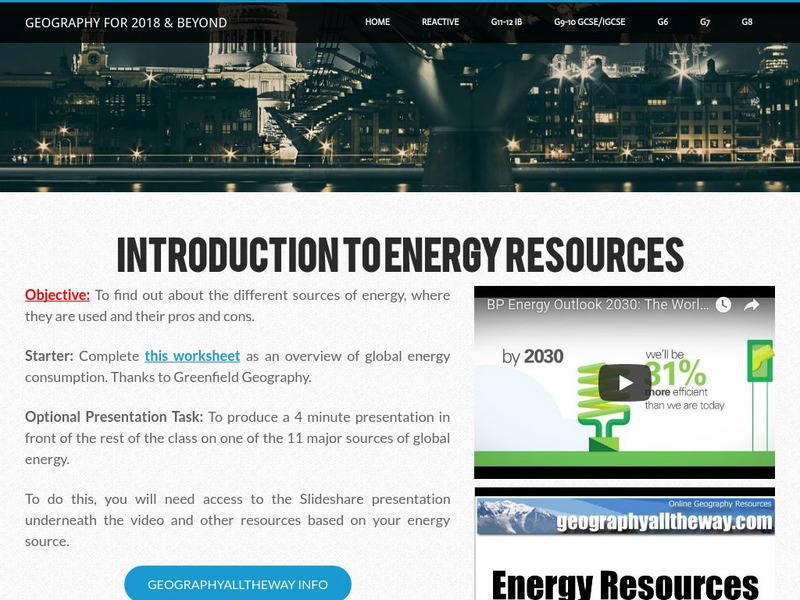
![Texas Comptroller of Public Accounts: The Energy Report: Hydropower [Pdf] eBook Texas Comptroller of Public Accounts: The Energy Report: Hydropower [Pdf] eBook](https://static.lp.lexp.cloud/images/attachment_defaults/resource/large/FPO-knovation.png)

